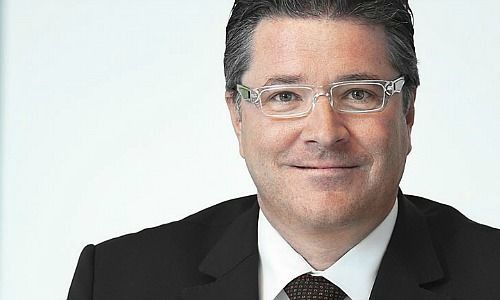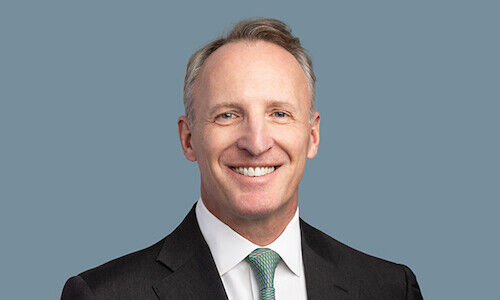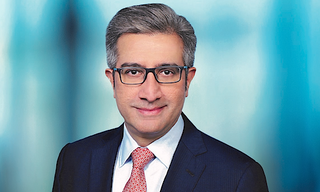The market rally worldwide since the election of Donald Trump has been impressive. Investors now face the question of whether they should bet on a continuation of this rally or if it is time to protect against risks.
By Daniel Brüesch, Head Private Banking Investment Office, Vontobel
Similar to the Brexit referendum in the U.K., the election of Donald Trump as the 45th US president on November 8, 2016 shocked the political world and markets alike. Even more surprising was the reaction on financial markets over the past four months.
After an initial slump on Asian markets, the mood quickly turned following Trump’s victory speech, and markets rallied based on hopes for faster growth, infrastructure investments, tax cuts and deregulation. Since election day, U.S. stock markets rose approximately 11 percent, and this past Monday, the Dow Jones Industrial Index closed at a new all-time high for the 12th straight day, the longest such streak since 1987.
However, the situation in 1987 cannot be compared to 2017. Due to the increased globalisation, markets worldwide are now closely connected, and developments in the U.S. are affecting all regions. Consequently, the MSCI World Index also rose approximately 10 percent since November 8.
High Hopes And Expectations
To date, the so-called Trump rally has mainly been based on hopes and expectations since the specific policies and legislation that will be proposed or implemented are not clear yet. In his speech to Congress on Tuesday, Trump reiterated his policy proposals but failed to provide more specific details.
The big question is now whether Trump can really deliver on his promises and achieve the growth that markets expect. Although Republicans hold the majority in both chambers, the successful implementation of Trump’s ideas is far from guaranteed. His infrastructure plan, for example, faces opposition within his own party, and several free-market oriented Republicans have expressed scepticism about public spending on infrastructure.
Conversely, many Democrats are not buying into the public-private approach with tax incentives that Trump and the Republicans favour. And whereas Republicans, in general, are enthusiastic about tax reforms, Trump’s proposed tax cuts – in combination with increased spending on infrastructure, the Mexican border wall and the military – put him on a collision course with fiscal conservatives in Congress who for years have railed against the ballooning federal debt.
Further risks that could jeopardize high market expectations include the implementation of anti-growth policies such as immigration restrictions, deportations, new tariffs and duties as well as the potential ignition of foreign-policy conflicts.
Renewed Focus On Diversification
Overall, we are still constructive on U.S. markets. Fundamentals such as low unemployment, wage growth, improved consumer sentiment and positive earnings reports paint a picture of a solid and growing economy. Nevertheless, due to high expectations and the relatively elevated valuations of U.S. equities, markets have also become more vulnerable to disappointments and downside risks have increased.
In such an environment, global investors are well advised to renew their focus on diversification across different regions, asset classes, sectors and currencies. While we stick to our overall U.S. equity exposure, we have recently implemented a few rotations out of «reflation-trade» sectors such as financials that benefited in particular from the Trump rally into more defensive sectors. Reflation describes an environment in which inflation picks up after a long period of little price pressures and in which fiscal spending is increased.
Opportunities Across Regions And Asset Classes
Somewhat in the shadow of reports about the American economy, Europe continues to put forward positive economic indicators such as GDP growth, strong PMI data and increased business confidence. This combined with comparatively favourable valuations supports our positive stance towards European equities. At the same time, we are keeping a close eye on the political risks due to upcoming key elections in the Netherlands, France, Germany and Italy.
Another region where we see interesting diversification potential and attractive valuations is Asia. This large economic area benefits from demographic developments such as general population growth and a fast-growing middle class, and local consumption continues to boost markets.
A Type Of «Insurance»
While the attractiveness of bonds has suffered over the past few years, they still form an essential part of every portfolio. Within this asset class, we recommend a broad diversification that also includes currently unpopular sovereign bonds. Even though they offer little to no (or even negative) yields, they act as a type of «insurance» if the reflation scenario, which currently drives markets, fails to materialize.
Another interesting portfolio addition are investment-grade bonds denominated in dollars, which are also available hedged to the respective reference currency. The dollar continues to be one of the most important drivers as well as barometer of the global economy. Irrespective of the specific political developments in the U.S., we consider this currency as well supported and stick to our expectation of three rate hikes in the current year.
Following a long period of disappointing returns, alternative strategies appear again promising in our view. The withdrawal of central bank liquidity observed in the U.S. and – with a certain lag – the rest of the world opens up new opportunities that were lacking in the past few years. We thus expect this asset class to be able to deliver on expected performance.
Gold Belongs In Every Portfolio
Last but not least, gold belongs in every portfolio, also in times of booming stock markets. This asset class serves as a protection not only from unforeseen «black swan» events but also if the next two years will be characterised by stagflation instead of the widely anticipated reflation.
In addition to a broad diversification, investors are also advised to strive for a long-term mind set with a medium-term investment horizon of three to five years and to follow a disciplined investment approach. Only then will they be able to reap the full benefits of global diversification over a complete economic cycle.


























